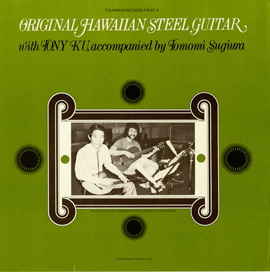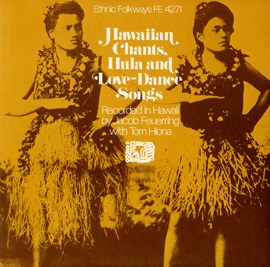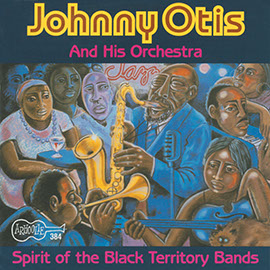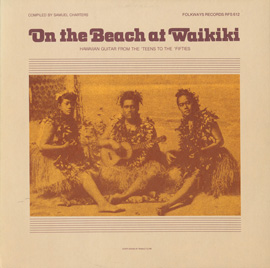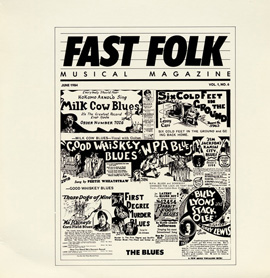Summary
Discover the island cultures of the South Pacific and their musical expressions with songs, crafts, and games. Uses recordings of Hawaiian slack key guitar, rhythmic game songs from the Solomon Islands, and Papua New Guinea flute playing.
Suggested Grade Levels: 3-5
Country: United States, Solomon Islands, Papua New Guinea
Region: Pacific Islands
Culture Group: Hawaiian, Melanesian
Genre: World
Instruments: Shakers
Language: Hawaiian
Co-Curricular Areas: Social Studies, Dancen
National Standards: 1, 2, 5, 6, 9
Prerequisites: None
Objectives:
- Listening to instruments, singing, beats, form, ostinato
- Singing short melodic figures
- Moving to a steady beat; playing moving games; inventing movements
- Playing rhythms
- Notating short rhythms
Material:
- “Fair Hawaii” by Tony Ku & Tomomi Sugiura from Original Hawaiian Steel Guitar (FW08714_101)
- “E Pele Pele Pele” from Hawaiian Chants, Hula and Love Dance Songs (FW04271_101)
- “Anoai” from Hawaiian Chants, Hula and Love Dance Songs (FW 04271_104)
- “Singing Games A, B, C” from Polynesian Songs and Games from Bellona (Mungiki), Solomon Islands (FW04273_103)
- Polynesian Songs and Games from Bellona (Mungiki), Solomon Islands Liner Notes
- “Burari Solo - Flute Solo” by Subam from Music from South New Guinea (FW04216_115)
- “Burari Solo - Flute Solo” by Girao from Music from South New Guinea (FW04216_116)
- Maps of Hawaiʻi, Solomon Islands, and Papua New Guinea
- Choice of recorded Western flute music
- Form activity: envelopes, index cards with A and B marked on them
- Optional: hollowed out gourds/coconuts and seeds/pebbles to create a gourd rattle
Lesson Segments:
- Hawaiʻi
- “Fair Hawaii” (National Standards 2, 6, 9)
- “E Pele Pele Pele” (National Standards 1, 6, 9)
- “Anoai” (National Standards 2, 5, 6, 9)
- Solomon Islands
- “Singing Games A and B”(National Standards 6, 9)
- Papua New Guinea
- Burari Solo (Flute Solo by Subam or Girao)(National Standards 6, 9)
1. “Fair Hawaii”

“Fair Hawaii”
from Original Hawaiian Steel Guitar (1979) | FW08714
- Find Hawaiʻi on a map of the United States.
- Discuss its incorporation as the 50th state in the United States in 1959
- Although it is part of the United States, it has a unique culture that features Polynesian influences
- One of the unique musical developments in Hawaiʻi was that of steel guitar playing:
- Steel guitar playing was developed by a Hawaiian man named Joseph Kekuku shortly before the turn of the 20th century. He experimented with various ways of playing the strings of the guitar, finding that depressing the strings with a piece of metal provided the ethereal sound now associated with Hawaiian steel guitar playing
- Search for a picture or video of a steel guitar on the internet to share with the class as a visual reference
- c. Listen to “Fair Hawaii” recording.
- Tap steady beat in heels quietly
- Step the steady beat while traveling around the classroom
- In small groups or individually, invent a body percussion ostinato to accompany “Fair Hawaii” (may include claps, stomps, snaps, slaps, pats, etc.)
- Apply invented percussion ostinato to another song with the same meter as “Fair Hawaii”
Extension: Invite students to discuss their experiences with Hawaiian culture, including pictures from vacations, or other steel guitar recordings.
Assessment: Are students able to discuss these topics at an age appropriate level? Are students able to find and keep the steady beat? Are students able to invent their own ostinato to fit the meter of the song?
2. “E Pele Pele Pele”

“E Pele, Pele, Pele (Hawaiian Drama-Hula)”
from Hawaiian Chants, Hula and Love Dance Songs (1972) | FW04271
“Anoai (Hula Uliuli)”
- Hawaiian dance (hula) and chant are art forms that preserve the heritage of the Hawaiian people by passing on stories of gods and goddesses who were influential in Hawaiʻi’s past.
- Pele is the Hawaiian Goddess of Volcanoes; this particular song/chant tells of her search for a home that brought her across the Pacific Ocean to the shores of Hawaiʻi.
- Search for a picture of video of hula dancers on the internet to share with the class as a visual reference
- Listen to “E Pele Pele Pele” recording
- Listen for a repetitious section of the song
- Once identified sing along with the “E Pele Pele Pele” portion as the chant becomes familiar
- Form Activity: have students describe what different musical components they heard
- There are 2 clear sections: one that features the “Pele” chant and another that has a different melody and faster drumming
- Give students an envelope filled with index cards with A and B written on them; have students listen again and arrange the index cards in the order of the song
- Loose interpretation: Intro A B A B A Coda(s)
Extension: Invite a Hawaiian culture bearer to teach various hula chants and movements that tell of the goddess Pele.
Assessment: Are students able to discuss these topics at an age appropriate level? Are students able to identify the repetitious sections of the melody? Are students able to piece together the form of this song?
3. “Anoai”
- Many Hawaiian chants tell of nature: the sea, plants, lava, etc. This piece tells of the lehua blossom and the drizzling rain that touches its petals.
- Search for a picture of the lehua blossom on the internet to provide the class with a visual reference
- Listen to “Anoai” recording.
- How is the drizzling rain communicated through the music? Is there a particular instrument that evokes the rain? (Gourd rattle)
- Listen for the simple ostinato (1&2&) and play this on rattles/shakers
- Invent individual ostinatos (2 to 4 beats in length).
- Notate the ostinatos on provided staff paper
Extension: Create a Hawaiian gourd rattle from hollowed out, dried gourds or coconuts filled with seeds or small pebbles to accompany the chant.
Assessment: Are students able to discuss these topics at an age appropriate level? Are students able to identify the gourd rattle? Are students able to play the ostinato? Are students able to notate the ostinato in symbolic notation?
4. “Singing Games A and B”
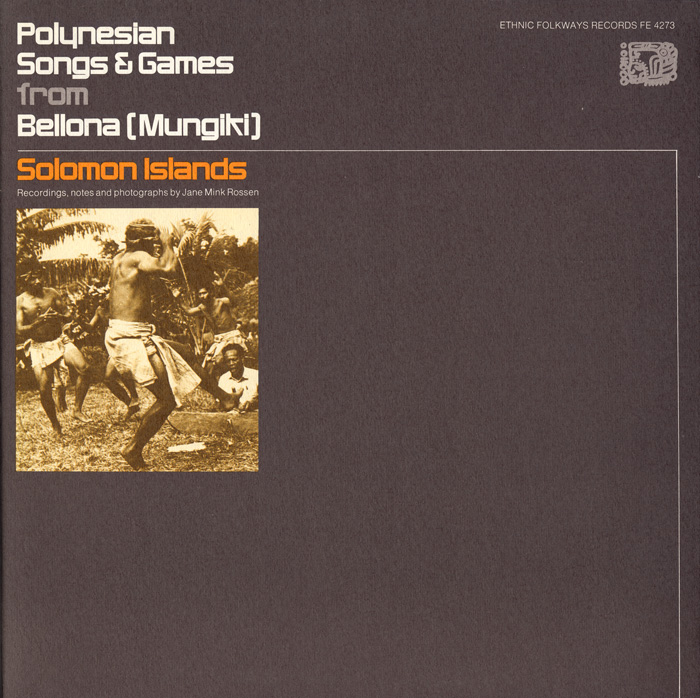
“Singing Games A, B, C”
from Polynesian Songs and Games from Bellona (Mungiki), Solomon Islands (1976) | FW04273
- Locate the Solomon Islands on a map or globe, particularly the island of Bellona, which is part of the Solomon Islands from which these listening examples originated.
- Singing games have been part of the culture of the Solomon Islands for centuries; they may be played by children or children and adults
- Listen to “Singing Games” recording.
- Singing Game A (The Ant Pinching Game):
Text and Translation:
Pinching ant,
Pass up, how many times?
Pass up, three times!
Spread out, spread out!
Kubikubi ngoo’ata
‘Aabake hia?
‘Aabake tongu!
Hohonga, hohonga!
- Listen for the word “hohonga” which signals the end of the verse; raise your hand when you hear this
- Divide into groups of six students
- Students gather in a circle, place one hand in the circle
- Pretend to be pinching an ant between thumb and index finger; hand is rounded, palm facing down; (Please see picture from liner notes)
- Stack pinching hands one on top of the other from the floor upwards
- Play the recording; when students hear “hohonga” signaling the end of the verse, the hand on the bottom of the stack flattens out
- The verse repeats; at the end on “hohonga,” the next lowest hand flattens out
- At the end of each subsequent verse, the lowest “pinching” hand flattens out until all hands are flattened out in a pile

- Singing Game B (The Pounding Game, at 1:30 in recorder track):
- Divide into groups of six students
- Students gather in a circle, place one hand in the circle
- Students stack fists from the floor upwards, similar to Ant Pinching Game; rather than pinching an ant, make a rounded fist, palm facing down
- Upon hearing “hohonga” at the end of a verse, the bottom hand flattens out
- Game continues as in the Ant Pinching Game until all fists are flattened out (These are essentially the same game with different songs and slight variations in the hand positions)
Extension: What are some singing/hand motion games you are familiar with? How do these reflect your culture? Choose one to teach to the class.
Assessment: Are students able to discuss these topics at an age appropriate level? Are students successful in following the directions of the games?
5. “Burari Solo (Flute Solo by Subam or Girao)”
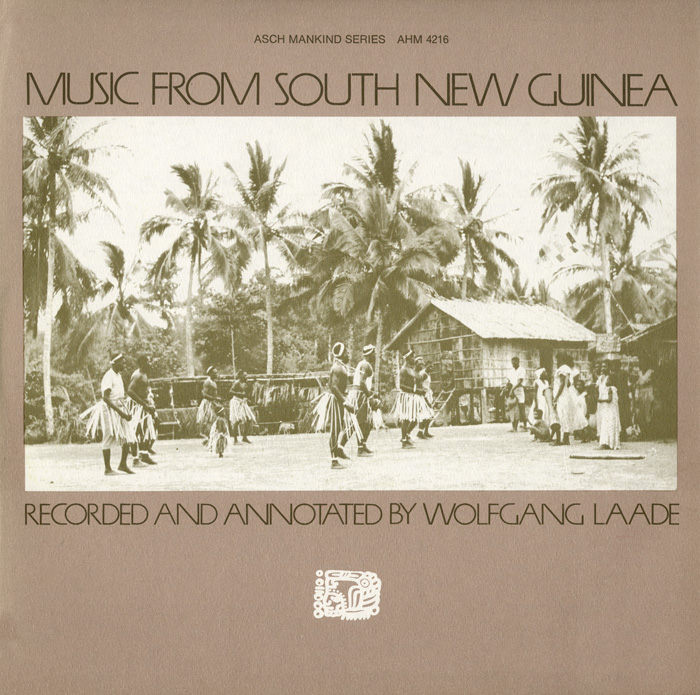
“Burari Solo - Flute Solo”
from Music from South New Guinea (1971) | FW04216
“Burari Solo - Flute Solo”
- Using a map or globe, locate Papua New Guinea, specifically the Southern portion where the recorded examples originated.
- Many types of vocal music and dance are popular in this region, as well as flute music
- “Burari” is the Agab name for one of the types of flute used in Southern Papua New Guinea.
- It is made from cane with finger holes spaced in such a way that is inconsistent from flute to flute
- Burari music is typically less structured and metrical than other types of flute music
- Only young, unmarried men play the burari; it is a means through which to attract potential wives
- The burari is played during calm days during the rainy season, when the timbre of the flute can project (DEFINE: timbre)
- Listen to “Burari Solo” recording.
- Write down 5 adjectives that could describe the timbre of the burari solo (airy, light, etc.)
- Listen again, tracing the melodic contour with your finger
- Listen to an example of choice of the Western transverse flute - break into pairs and write a sentence or two describing how the flutes sound alike and/or different
Extension: Invite beginning band students or professionals to share their flute playing with the class, followed by discussion of how their flutes differ with the burari in composition and timbre.
Assessment: Are students able to discuss these topics at an age appropriate level? Are students able to describe the timbre of the burari flute? Are students able to accurately trace the melodic contour? Are students able to compare and contrast the sound of a burari flute to that of a traditional western flute?
Note: The transcriptions of these flute solos are available on the Smithsonian Folkways liner notes, if desired.


